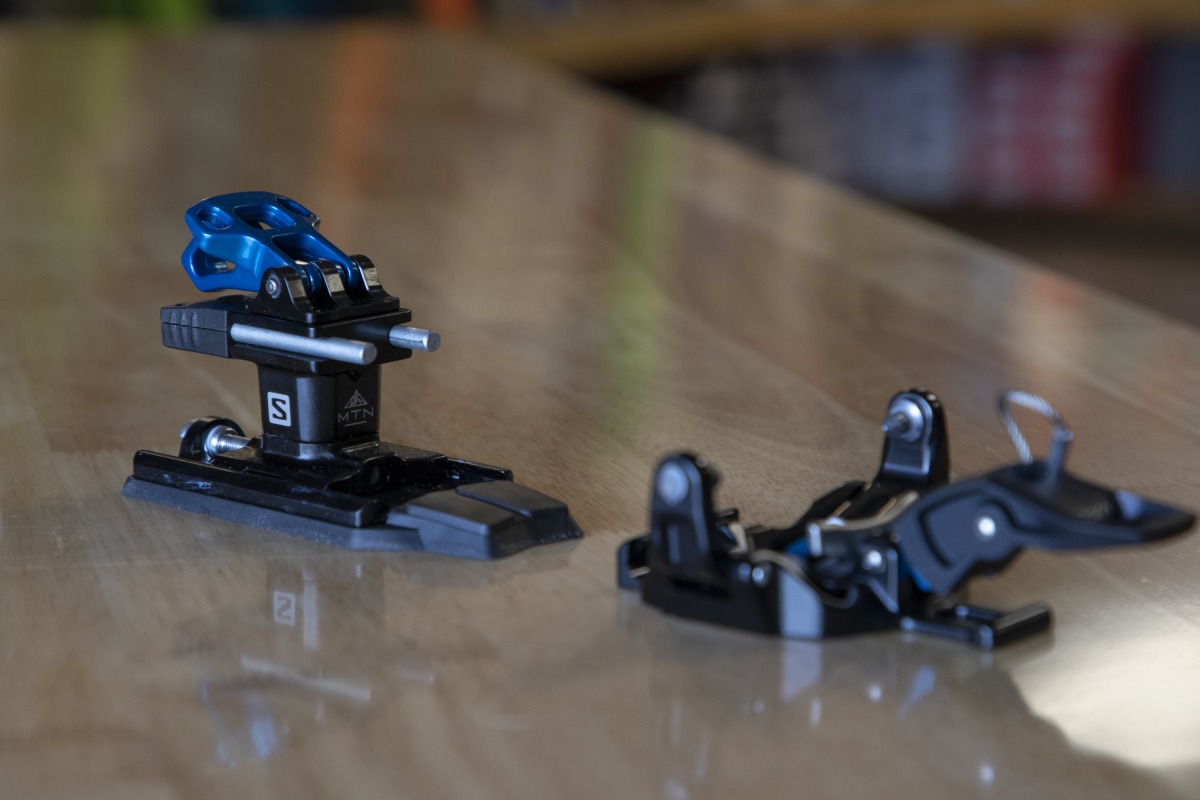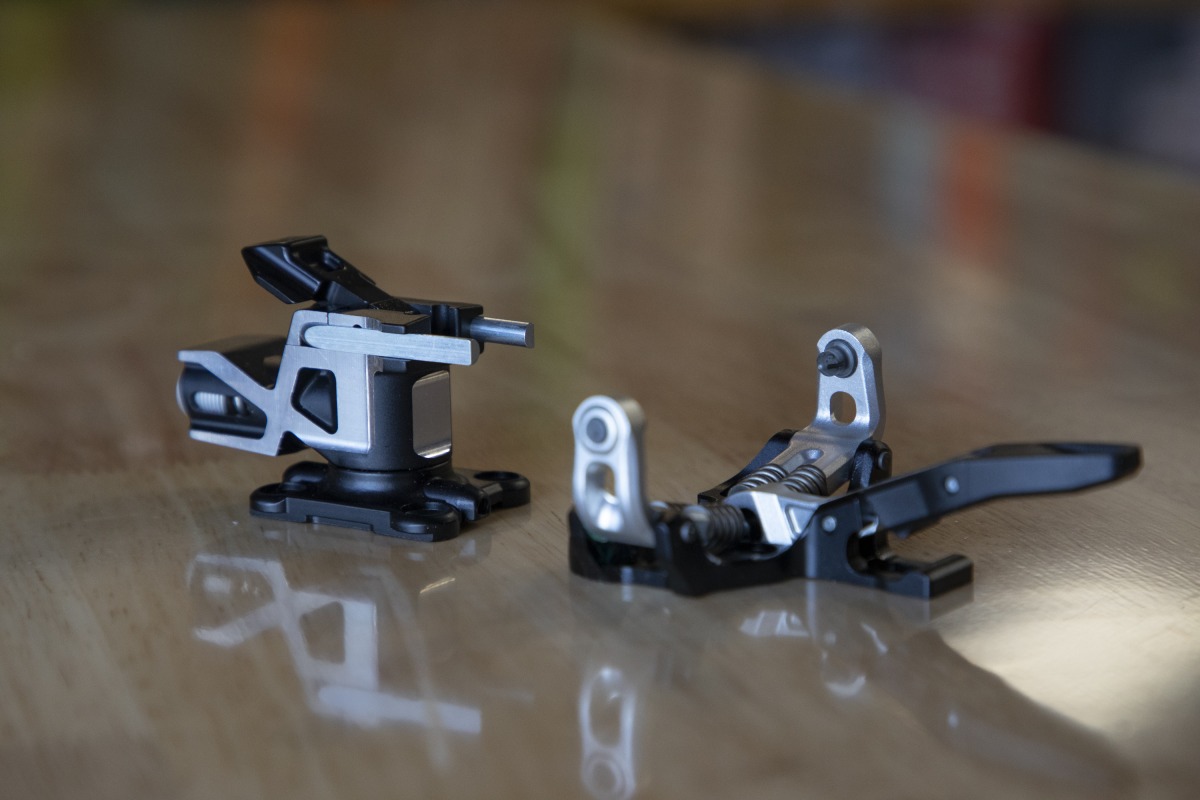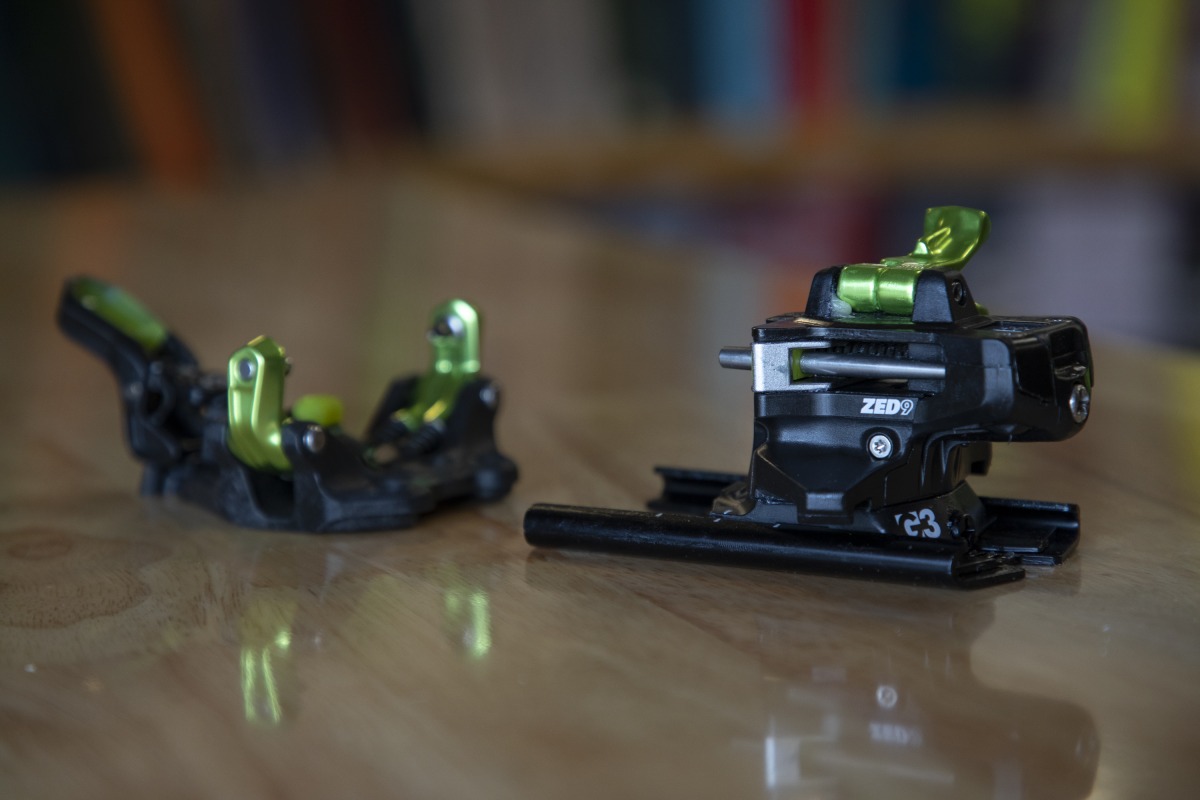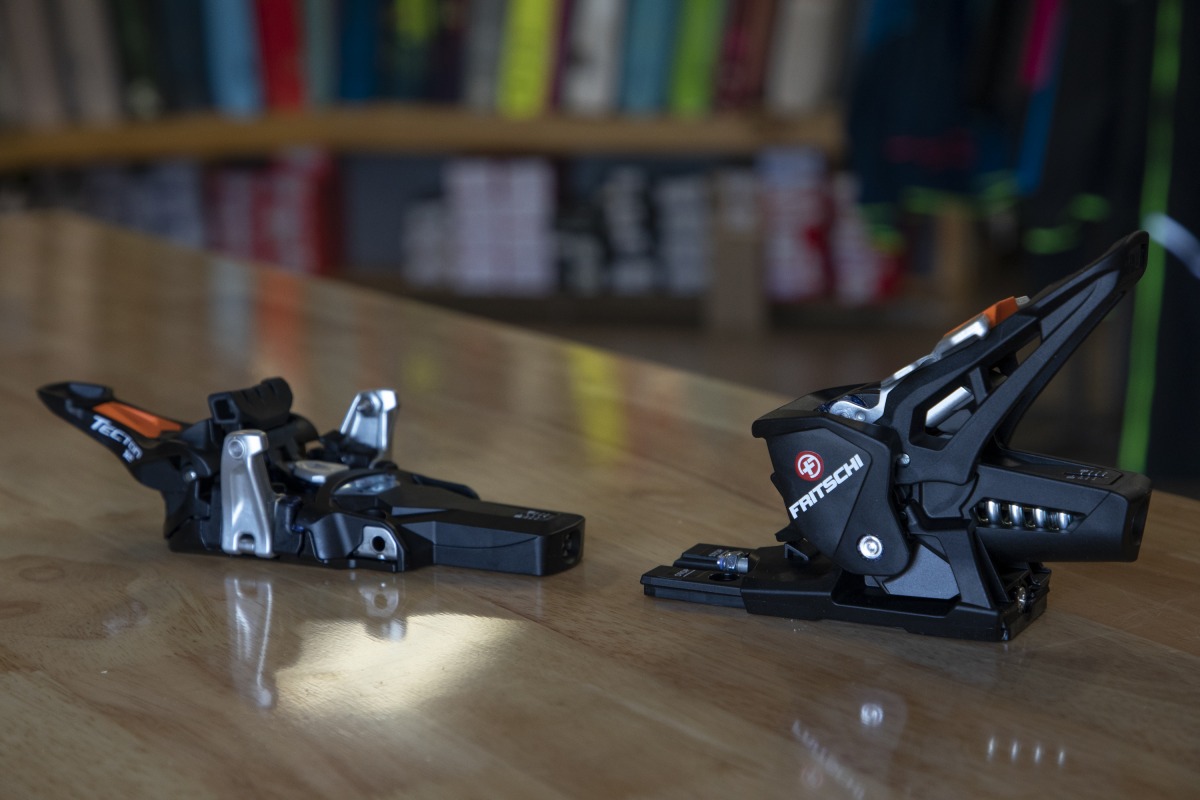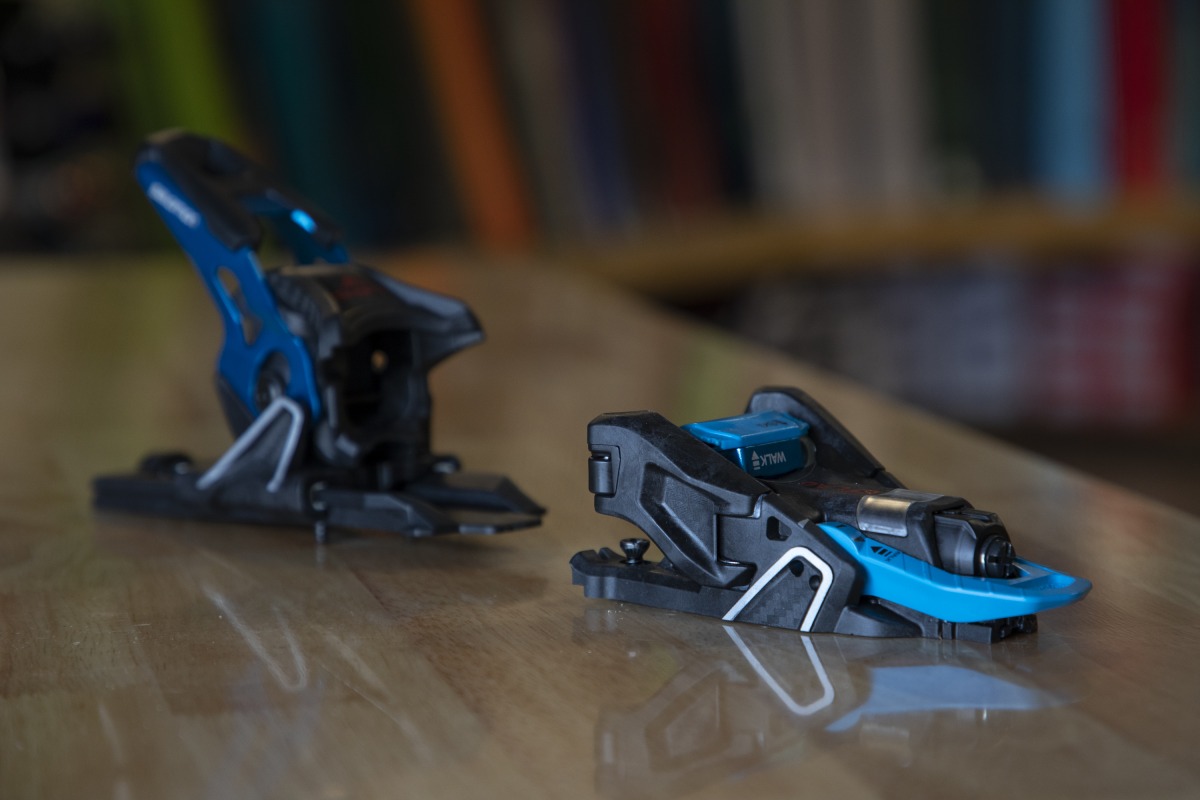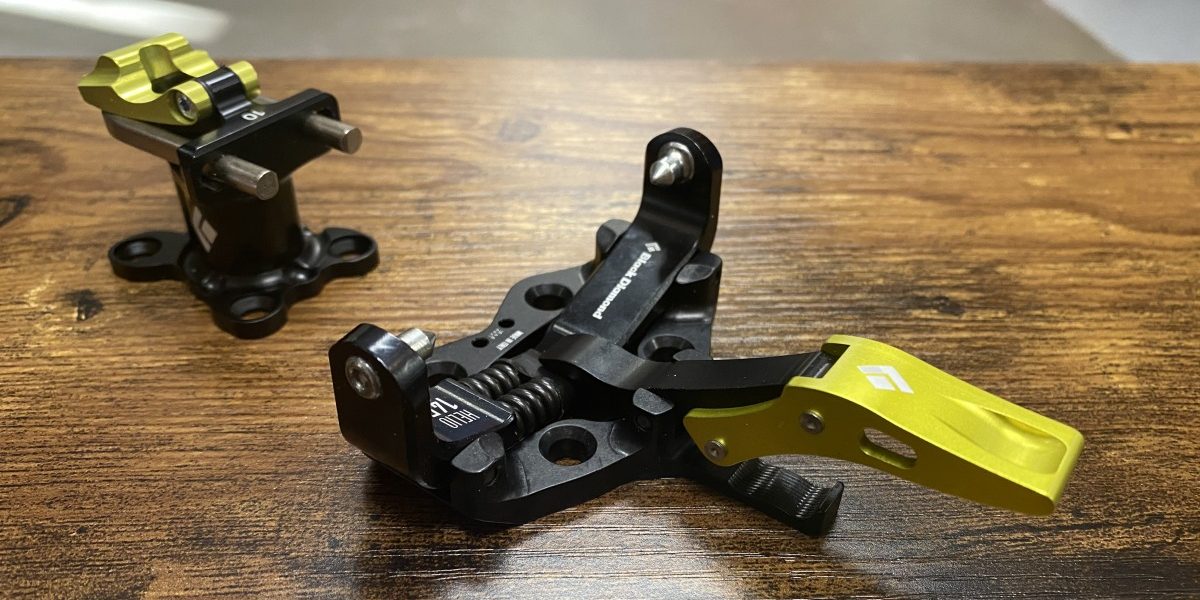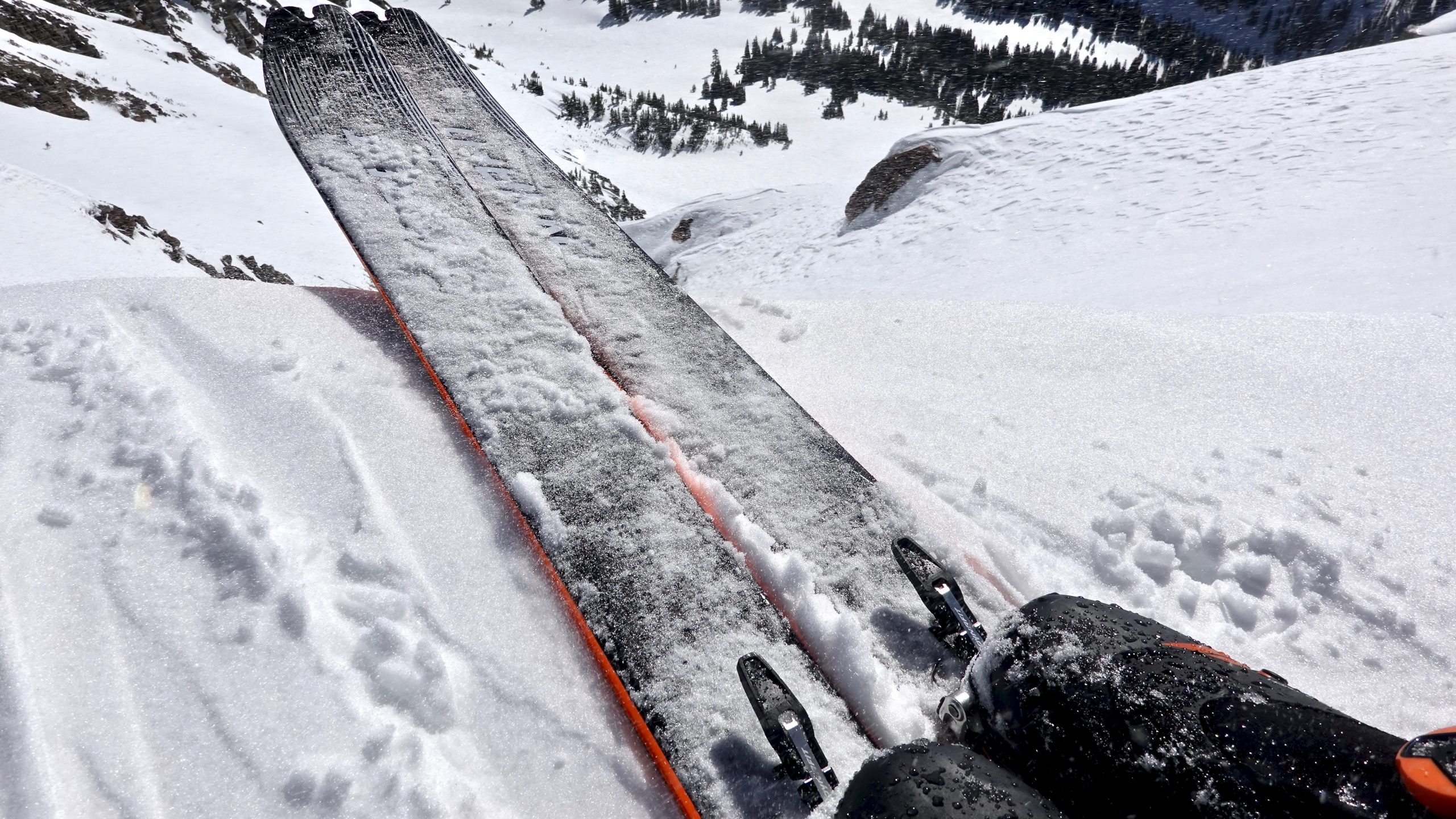
The right binding will give you the security to ski how you want in all terrain. Gary Smith found that it in Dynafits new for 20/21 Superlite 150 binding, winner of our best weight-savor category. Photo: Gary Smith
Shopping for binders? Here’s our favorites, somewhat categorized, in no particular order. We avoided debut, non consumer vetted 2020-21 rigs (with the exception of Dynafit 150, which Gary tested last spring). Most of those below have at least a season of proven performance — given you slot them into the correct category, and you’re aware of any quirks or borderline defects that have gone uncorrected. For those of you on the info quest, each binding title is linked to our site search.
Best Jack of All Trades
Is my love of the Atomic Backland (Salomon MTN) a bias, or rooted in solid performance? You’d have a tough time arguing me out of the latter. These grabbers do a brilliant job of combining classic tech binding mechanicals with current standards of performance. As proof this is a viable design, the Backland has now been in retail since 2015, albeit with “in line” improvements. Keep that in mind if you’re shopping. The best Backland at this time is the latest version, which you can identify using the info in this blog post.
Favorite features: Non-rotating heel lifter; tenacious toe springs; optional non-integrated brake (I happen to think is the best tech binding brake in the universe).
Weight (one binding no brake): 283 grams.
Best Weight Saver
In his review, Gary Smith says this revamp of the venerable Dynafit Superlight is “Fantastic…the The 80 cm long body is easy to grab and rotate. Race style (pins forward with flap, 41mm off the ski) is great for a lap track. Step in is easier than the [former] Superlite…The low and compact heel skis very well as it did in the 2.0, noticeably better than taller binders in firm snow.”
Favorite features: good compromise of weight vs everything else; low foot position.
Weight: 150 grams.
Shop for Dynafit Superlight 150
Easiest Step-In
Improving on the already classic G3 Ion binding, Zed strips out all extra material, leaving itself looking like a sleek sports car of lightweight bindings. And despite the trimming, Zed remains fully featured.
The Zed heel provides vertical and lateral release-value adjustments (although not independent) and a ski flex compensation system. Upon entry, the the strong toe springs close with a reassuring snap. Didn’t hear that snap? A common reason for failed binding closure — and subsequent pre-release — is ice or snow building up in the space between binding toe springs and ski top. To remedy this, G3 provides a cavernous cleaning slot under the Zed toe unit, big enough for a ski pole tip.
Zed, G3’s attempt at a somewhat classic style tech binding, got off to rocky start in its first iteration. An admittedly rare, but possibly serious breakage problem alarmed us, but more importantly the binding heel shifted noticeably fore/aft when used by all but the lightest weight skiers. The 2020/2021 version is a major improvement. Any abnormal breakage is a thing of the past. A stiffer flex compensation spring eliminates excessive heel movement for average to lighter weight skiers (we don’t recommend for heavier users).
Favorite features: G3’s proprietary toe geometry and strong toe springs prevent accidental release, and allow lighter weight skiers to tour without locking toe; best-in-industry release values calibration; one tool for all adjustments.
Weight (one binding, no brake): 376 grams.
Best Freeride Touring
Going for human powered, high-speed-wide-ski-video-worthy powder blasts and big drops? Fritschi Tecton’s combo of alpine-like heel with Fritschi’s chart busting lateral toe elasticity is your ticket to ride. The toe — pretty much the same as that of the Fritschi Vipec — is particularly attractive. First, know that it allows lateral safety release to occur at the toe, as with alpine bindings (most tech bindings do their lateral release sideways at the heel). This is important. If a binding releases sideways at the heel, and you ski hard — thus applying a lot of sideways force at the heel — the only way to prevent accidental lateral release is to dial up your binding’s lateral release value, which compromises safety. Thrust your heel to the side in a Tecton and you’ll be solid.
Instead of the Tecton toe pins residing on the usual wing-like configuration of most tech bindings, they’re track mounted. This allows as much left/right elasticity as binding and ski width allow engineers to create. In this case 17 millimeters, nearly the 20 mm average of alpine bindings. I could go on. Check our reviews.
Favorite features: alpine-like heel; amazing lateral elasticity.
Weight (one binding, with brake): 678 grams
Best Hybrid
Looking for the alpine binding that tours? Look no farther than the Salomon/Atomic Shift. Because of its weight, 884 grams, mere mortals won’t be doing lengthy tours on this guy. But hop off the ski lift, charge a sidecountry run, tour a short distance back to the gasthaus. Perfect. The name, Shift, references the transformer nature of this clamp. You convert to touring mode by flipping a hidden set of tech pins up from the toe unit. Ingenious.
Favorite features: no compromise alpine binding; does short tours.
Weight (one binding, with brake): 886 grams
Shop for the Salomon/Atomic Shift
Best Tour That’ll Race
Yes, it’s a rebranded ATK binding. So much the better. We love everything about ATK. Well, nearly everything. I could do without the midday grappa river that flows through their ISPO booth. But visiting these Italian “artisti” is worth spending the afternoon wandering in buzzed jetlag. I call their booth “the jewlery shop,” it’s that tasty. Kudos to BD for partaking of the glitter. We’ve not yet reviewed the Helio 145 — that’s coming — meanwhile we do have experience with the little thing. It’s proved to be durable, a good call for the the backcountry skier who wants something that’ll survive somewhat wider skis while adding virtually no weight. Look closely and you’ll notice the classic style tech toe has springs on only one side. Interesting!
Favorite features: strong for its weight; simplicity.
Weight (one binding, no brake): 145 grams.
Shop for the Black Diamond Helio 145.
WildSnow.com publisher emeritus and founder Lou (Louis Dawson) has a 50+ years career in climbing, backcountry skiing and ski mountaineering. He was the first person in history to ski down all 54 Colorado 14,000-foot peaks, has authored numerous books about about backcountry skiing, and has skied from the summit of Denali in Alaska, North America’s highest mountain.

